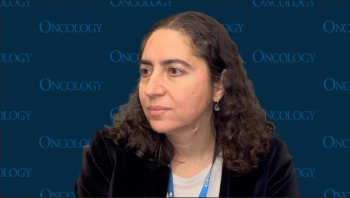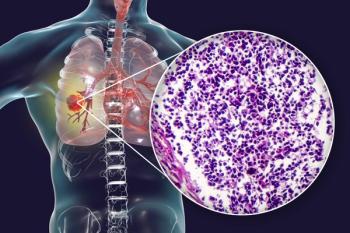
How Can Chlorotoxin-Directed CAR T-Cell Therapy Impact Glioblastoma Care?
Michael Barish, PhD, discusses a novel cellular therapy for patients with glioblastoma that harnesses chlorotoxin, a peptide found in scorpion venom.
In a conversation with CancerNetwork®, Michael Barish, PhD, spoke about an investigational CAR T-cell therapy that he and colleagues are developing as a treatment for patients with glioblastoma. He and his team designed the agent to harness chlorotoxin, an amino acid peptide toxin component of scorpion venom, as a vehicle for intratumoral delivery of therapy for this patient population.
Barish, a chair in the Department of Neurosciences/Developmental & Stem Cell Biology at City of Hope, discussed the background and mechanisms surrounding this novel compound, which he and colleagues evaluated as part of a phase 1 trial (NCT04214392). Early findings published in Cell Reports Medicine showed that among 4 patients with recurrent glioblastoma, 3 (75%) achieved a best response of stable disease. Additionally, the chlorotoxin-directed cellular therapy was found to be well-tolerated with no dose-limiting toxicities. Although responses were not as strong as Barish and colleagues had hoped, he described how the study nevertheless demonstrated the safety and feasibility of this CAR T-cell therapy formulation.
After establishing the safety of the novel agent in patients with recurrent glioblastoma, Barish highlighted how next steps for research included engineering different versions of the chlorotoxin and modifying the T cells that express the chimeric receptor. He stated these reconfigurations may help yield additional power and efficacy of the cellular therapy in future studies. Overall, Barish noted how the potential therapeutic application of the neurotoxin represented a “proof of principle.”
“[V]enoms of many invertebrates are, in fact, very powerful biologically. In a sense, evolution has honed them to be relatively specific. Neurobiology is very much driven by the specificity of different toxins for different ion channels,” Barish stated. “This idea—that one could use biological products efficiently this way for something as heterogeneous as glioblastoma—might be an example of how it could be more efficacious for other solid tumors as well.”
Reference
Barish ME, Aftabizadeh M, Hibbard J, et al. Chlorotoxin-directed CAR T cell therapy for recurrent glioblastoma: interim clinical experience demonstrating feasibility and safety. Cell Rep Med. 2025;6(8):102302. doi:10.1016/j.xcrm.2025.102302.
Newsletter
Stay up to date on recent advances in the multidisciplinary approach to cancer.




















































































